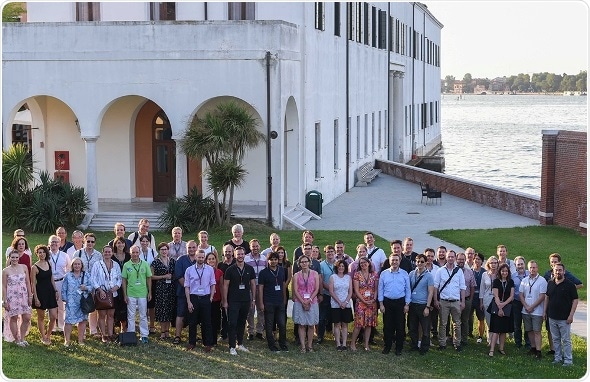Jul 17 2018
New technologies enable deeper insights into the causes of major diseases such as diabetes, obesity or cancer and open the way to a new generation of diagnostics and therapies. For the first time, the new Helmholtz Pioneer Campus (HPC) at Helmholtz Zentrum München and the German Center for Diabetes Research (DZD) have invited bioengineers, diabetes researchers and scientists from related therapeutic areas to the International Conference on Engineering Biomedical Breakthroughs on the island of San Servolo in the Venice Lagoon.

Source: Helmholtz Zentrum München
About 100 internationally renowned scientists discussed most advanced concepts for biomedical discovery and routes towards clinical application. The presentations focused on cutting-edge biomedical imaging, bioinformatics and bioengineering tools to inform future (noninvasive) diagnostics. The presentation of Nobel laureate Professor Steven Chu on nanoparticle-mediated imaging in biomedicine was a much anticipated highlight. He was honored with the Nobel Prize in Physics in 1997 for his research on the laser cooling of atoms. Steven Chu kindly agreed to serve as member of the scientific advisory board of the HPC.
"With this kick-off event, we have succeeded in building much needed-bridges between scientific disciplines while involving prominent scientists from globally-leading research institutions," said initiator Prof. Matthias Tschöp and main organizer Dr. Thomas Schwarz-Romond enthusiastically. “The International University of Venice offered an inspiring, academic venue and competent partner for this rather unique event.” The conference was hosted by Dr. Thomas Schwarz-Romond and his fellow HPC-directors Profs. Matthias Tschöp and Vasilis Ntziachristos. For full impact, they had joined forces with the DZD board members Prof. Martin Hrabě de Angelis, Prof. Hans-Ulrich Häring and Prof. Michael Roden. “We expect a lot of innovative potential and synergies to develop new diagnostic and treatment solutions at the junction of bioengineering and metabolism research,” said Vasilis Ntziachristos. “The primary drivers are bioinformatic concepts such as big-data analyses, deep learning and artificial intelligence in order to understand biological systems in their entirety and molecular depth," added Martin Hrabĕ de Angelis.
The aim of the recently founded HPC is to elucidate previously unsolved questions at the interfaces of various research disciplines and to quickly put the latest findings into practice with clinical partners. The 'pioneers' benefit from the internationally recognized expertise and infrastructure of Helmholtz Zentrum München as well as from its close interaction with the DZD. In the DZD, leading German basic researchers, clinicians and epidemiologists are developing new concepts for the successful prevention and treatment of diabetes and want to quickly transfer these into clinical practice.
The first ‘International Conference on Biomedical Breakthroughs’ provided numerous cooperation opportunities for interdisciplinary and patient-oriented research. All organizing partners and the international speakers of renowned research institutions emphasized the immediate added value and thus the special, extraordinarily successful format of this inaugural event.